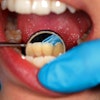United Health Foundation's 2013 America's Health Rankings report has ranked U.S. states according to their health and includes visits to the dentist in its data.
The healthiest states have a higher concentration of dentists, and their residents visited the dentist more often than those in the unhealthiest states, according to an article by USA Today. Overall, Hawaii was named the healthiest, while Mississippi was ranked the least healthy.
The healthiest states were the wealthiest, with incomes above the national median, while the three poorest states by median income, Mississippi, Arkansas, and Louisiana, were the least healthy. The unhealthier states had more smokers as well.
In Hawaii and Vermont, ranked Nos. 1 and 2, respectively, more than 70% of the population visited a dentist in 2012. Meanwhile, in Minnesota, ranked No. 3 overall, more than 74% visited a dentist, while 76% did so in Massachusetts, and 74% did in New Hampshire, ranking Nos. 4 and 5, respectively.
Hawaii has a high per capita concentration of dentists and physicians, the article noted.
The least healthy states had significantly lower rates of dentist visits in 2012. In Mississippi, 55% visited a dentist last year, the second lowest of all states. The state had only 42 dentists per 100,000 residents in 2011, fewer than any other state.
Arkansas had a slightly lower percentage of dentist visits last year, giving it the lowest ranking in that category. In addition, 1 in 4 residents is a smoker in the state.
Meanwhile, 56% of those living in Louisiana or West Virginia saw a dentist last year, while 59% did so in Alabama.
America’s Health Rankings is an annual comprehensive assessment of the nation’s health on a state-by-state basis that evaluates a historical and comprehensive set of health, environmental, and socioeconomic data to determine national health benchmarks and state rankings. It is published by the United Health Foundation, American Public Health Association, and Partnership for Prevention. The report's data come outside sources, such as the Centers for Disease Control and Prevention, American Medical Association, FBI, Dartmouth Atlas Project, and U.S. Department of Education and Census Bureau, according to the United Health Foundation.















